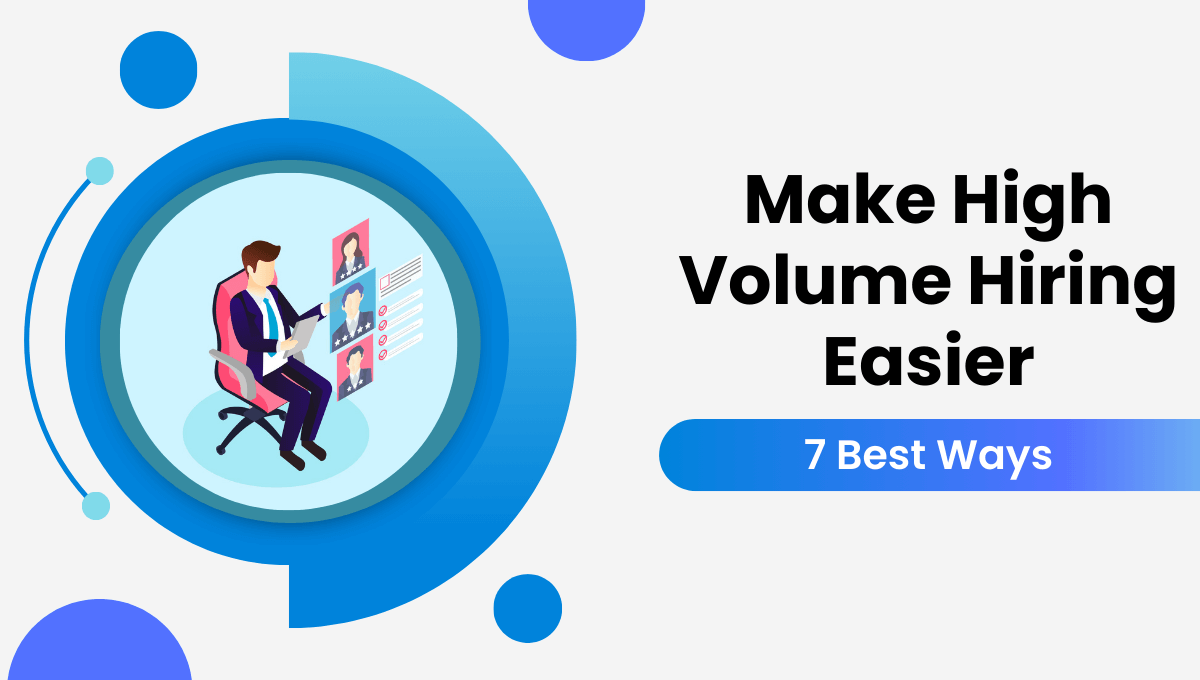High-volume hiring is crucial for companies, especially during the expansion phase or seasonal demand. This process ensures that companies can swiftly fill various positions to maintain operational efficiency and meet customer needs.
It allows businesses to scale effectively, manage workloads, and sustain productivity without overburdening existing staff. Additionally, high-volume hiring helps companies quickly adapt to market changes and seize new opportunities, maintaining a competitive edge in their industry.
When it comes to hiring tech talent in mass, knowing how to recruit fast is only one aspect of the challenge. The real deal is creating a high-volume hiring strategy in the highly competitive industry. Having a detailed approach to mass recruitment can sort out many unique challenges.
High-Volume Recruitment Strategies To Transform Hiring Process
1: Diversified Hiring Source
If you’re buying in bulk, you’ll need multiple suppliers—one alone can’t keep up with the demand. The same concept applies to recruitment. If you are willing to hire employees in high volume, you need to diversify your sources. For instance, job boards are an established talent source, but the potential exists beyond them.
One prominent method is social media hiring. For instance, LinkedIn is a bountiful source of talent.
LinkedIn has built-in search filters that let potential candidates search for open positions in multiple industries and locations, making your efforts fruitful there.
2: Increase Job Visibility Through Optimization
Your job posting is only used if it’s visible to candidates. Hence, when it comes to mass hiring, it’s important to increase search visibility. As a recruiter, you need to align your recruitment strategies to the candidates’ minds. You need to think about where they spend most of their time and are more likely to come across the job posting.
Here is how you can optimize your job posts.
- A crisp, concise, and engaging job title quickly grabs attention. In contrast, candidates often lose interest if they read a boring headline.
- Ensure you have highlighted the key points in the job description. This includes information like reasons to work, experience, required skill set, and preferred salary range.
When it comes to high-volume hiring, every second counts for both you and the applicants. Ensuring clarity and ease of use from the outset streamlines this crucial phase and helps avoid potential misunderstandings.
3: Elevate Administrative Experiences to Streamline Hiring Processes
Recruiters often experience burnout due to the demanding nature of their job, especially during high-volume hiring periods. The relentless cycle of screening resumes, conducting interviews, and managing multiple candidates can quickly become overwhelming. The pressure to fill numerous positions within tight deadlines further exacerbates stress levels, leading to fatigue and decreased productivity. This burnout is more prevalent during high-volume hiring as the increased workload and urgency can strain recruiters’ mental and emotional well-being.
Therefore, organizations need to provide adequate support. Technologies like ATS can help recruiters improve their administrative experience. This allows recruiters to:
- View and manage multiple calendars simultaneously to schedule interview slots for the hiring team as per their availability.
- Email candidates in bulk using the email template.
- Search candidates using filters such as source type, job titles, company name, experiences and more.
4: Outsource Candidates When Necessary
Outsourcing parts of the recruitment process can significantly enhance efficiency during high-volume hiring. Recruitment Process Outsourcing (RPO) firms or specialized recruitment agencies can handle various tasks, such as sourcing candidates, screening resumes, and conducting initial interviews. This allows internal HR teams to focus on final-stage evaluations and strategic decision-making.
5: Automation of the Onboarding Process
You have hired several candidates, but you aren’t ready for grouped onboarding. This could be troublesome. Hence, Automating the onboarding process is a game-changer for organizations dealing with high-volume hiring. By streamlining and digitizing various stages, companies can significantly enhance efficiency, reduce errors, and improve the overall candidate experience.
- Automation eliminates manual tasks such as data entry, form filling, and document verification, leading to a faster onboarding process. This allows new hires to become productive sooner and contributes to overall business agility.
- Automated systems can provide real-time updates, personalized communication, and self-service options, creating a positive and engaging onboarding experience. This helps build a strong employer brand and attracts top talent.
- Automated data capture and validation minimize errors and ensure compliance with regulatory requirements. This reduces the risk of costly mistakes and strengthens the organization’s reputation.
6: Leverage Analytics To Optimize The Hiring Pipeline
Leveraging employee referrals is a highly effective strategy for managing high-volume recruitment. Encouraging current employees to refer candidates for open positions can significantly speed up the hiring process and improve the quality of hires. Employees are likely to refer candidates who they believe are a good fit for the company culture and role, which can lead to better retention rates and quicker onboarding.
Referral hires have a retention rate of 46%, compared to only 33% of job board hires. This means that employees who their colleagues refer are more likely to stay with the company for a longer period of time.
By tapping into the existing workforce’s networks, companies can access a pool of pre-vetted candidates, streamline the recruitment process, and reduce the overall cost of hiring. This approach not only speeds up high-volume recruitment but also enhances the quality and fit of new hires.
7: Leverage Technology And Automation
Utilizing technology and automation is essential for efficiently managing high-volume hiring. Advanced Applicant Tracking Systems (ATS) can streamline the process by automating routine tasks such as resume screening, candidate communication, and interview scheduling. This not only saves time but also reduces the risk of human error.
Automation tools can also enhance the candidate experience, which is critical in high-volume hiring scenarios. Chatbots, for instance, can provide immediate responses to candidate inquiries, offer updates on application status, and even conduct initial screening interviews. Research by Allegis indicates that 58% of candidates are comfortable interacting with AI and chatbots during the early stages of the recruitment process. By providing timely and consistent communication, these technologies help maintain candidate engagement and reduce dropout rates.
Moreover, data analytics powered by recruitment technologies can offer valuable insights into the hiring process. By analyzing key metrics such as time-to-fill, source of hire, and candidate quality, recruiters can identify bottlenecks and areas for improvement.
Conclusion
High-volume hiring is undoubtedly challenging. It brings its own set of challenges that require strategic approaches and innovative solutions.
However, Smoothire’s advanced ATS and CRM features allow you to automate routine tasks, enhance candidate experience, and provide actionable insights through data analytics.
Don’t let high-volume hiring overwhelm you – get Smoothire to access a seamless, efficient recruitment operation. Contact us today to learn more!



